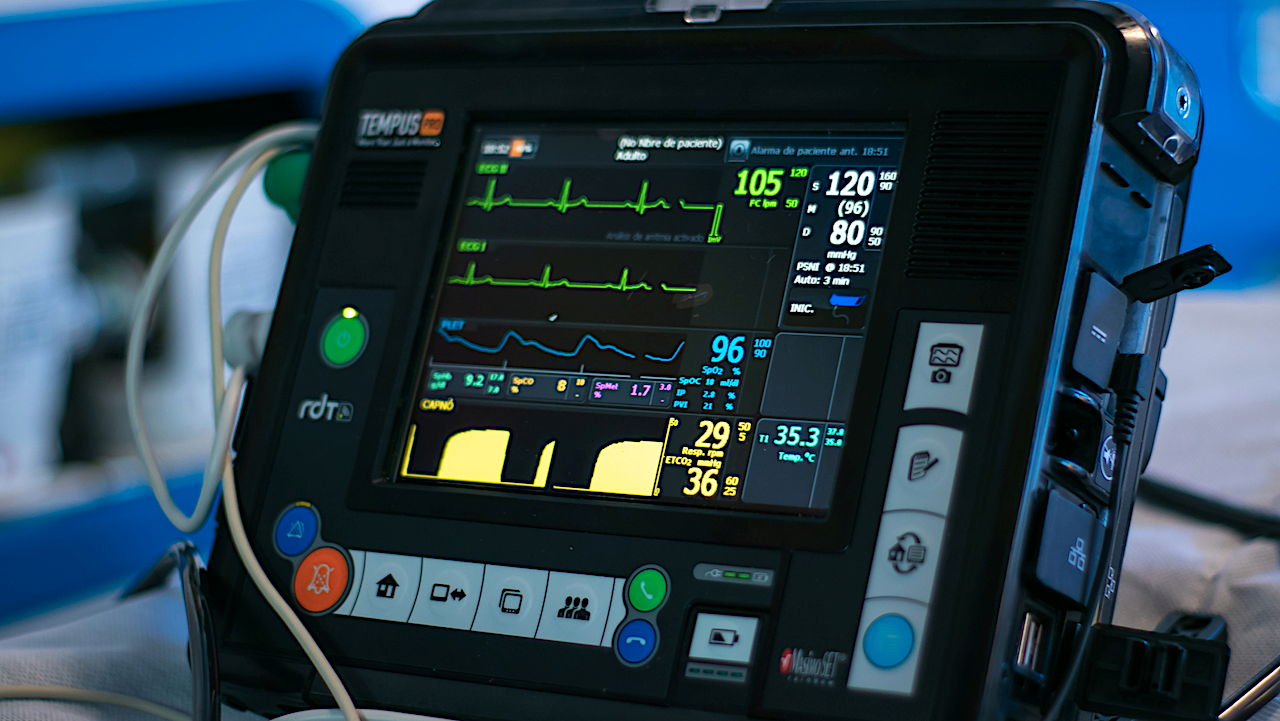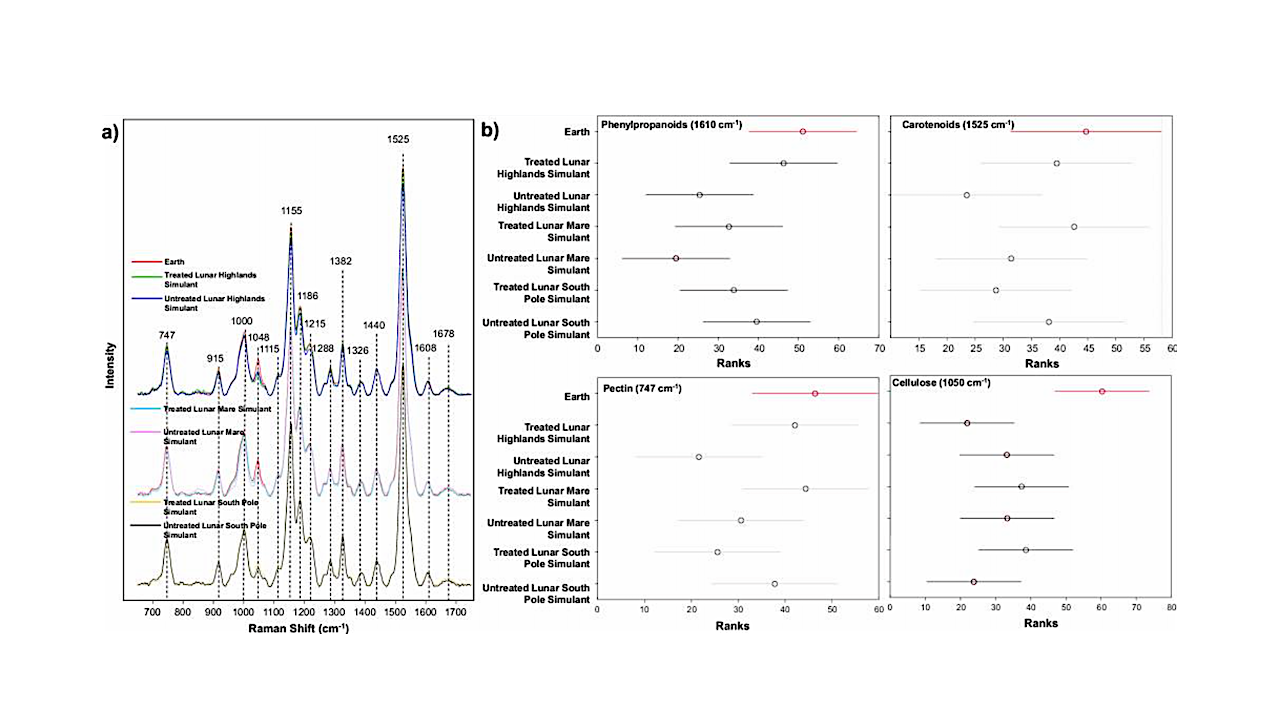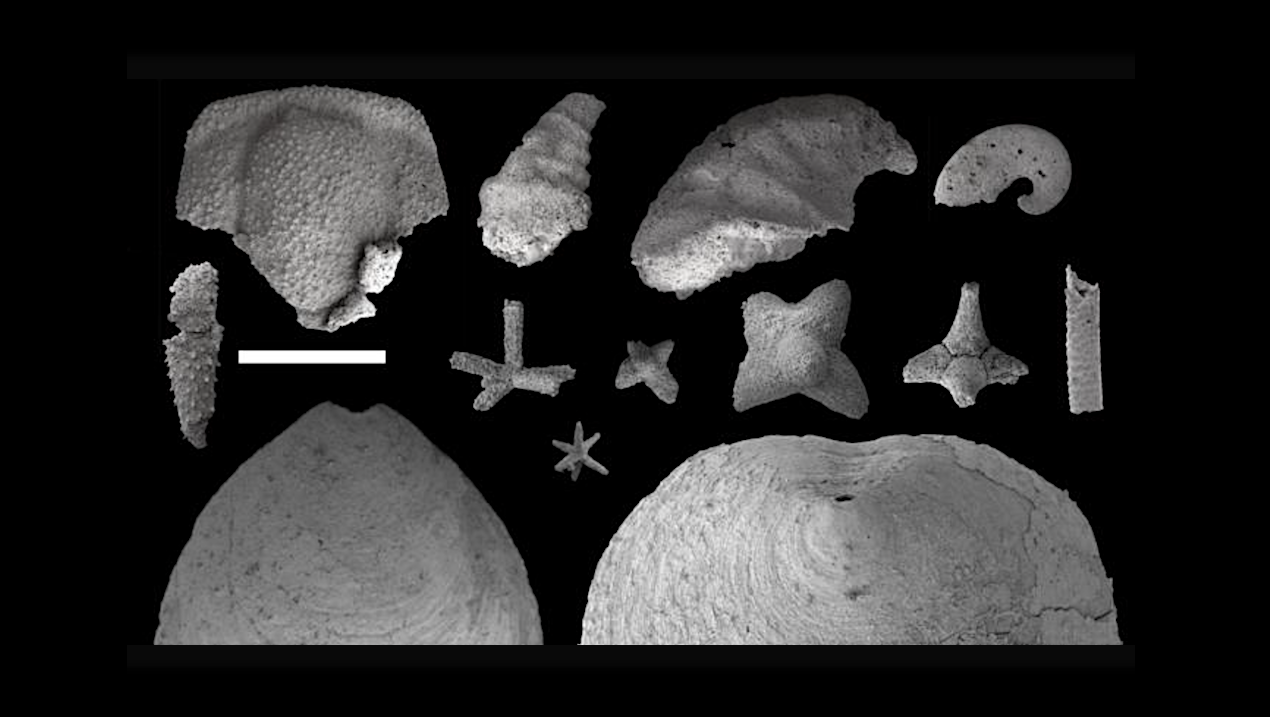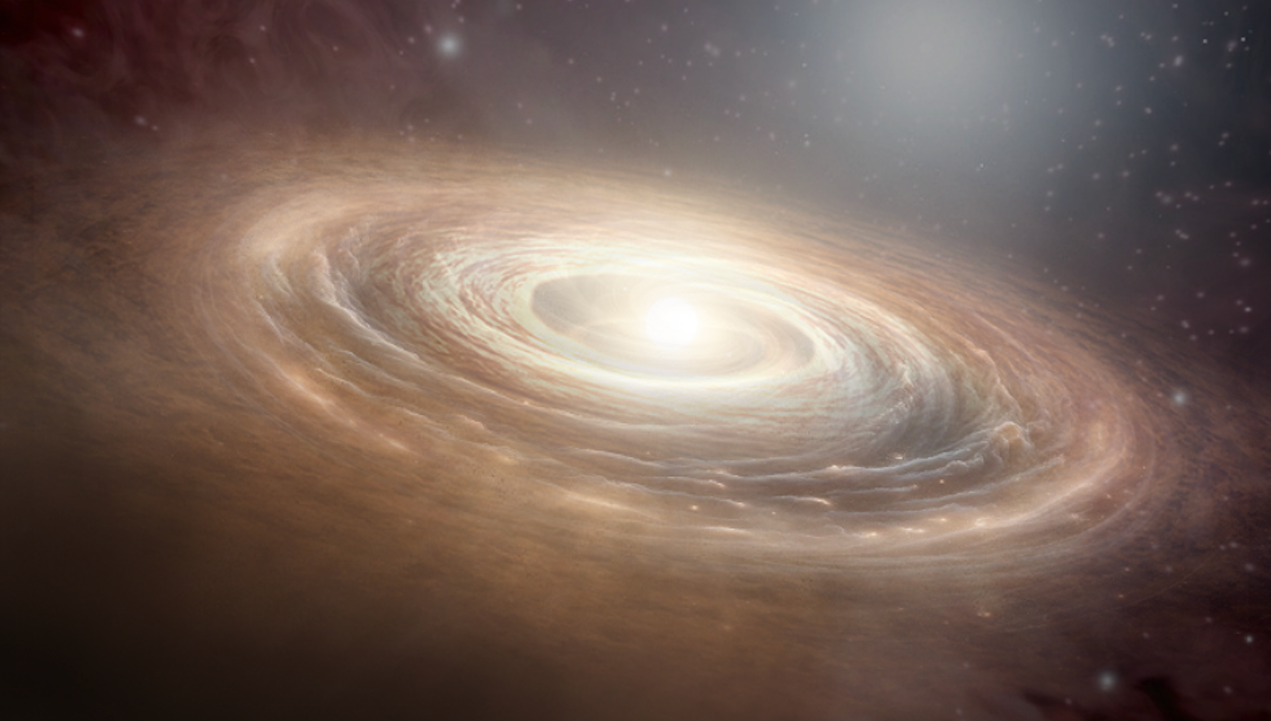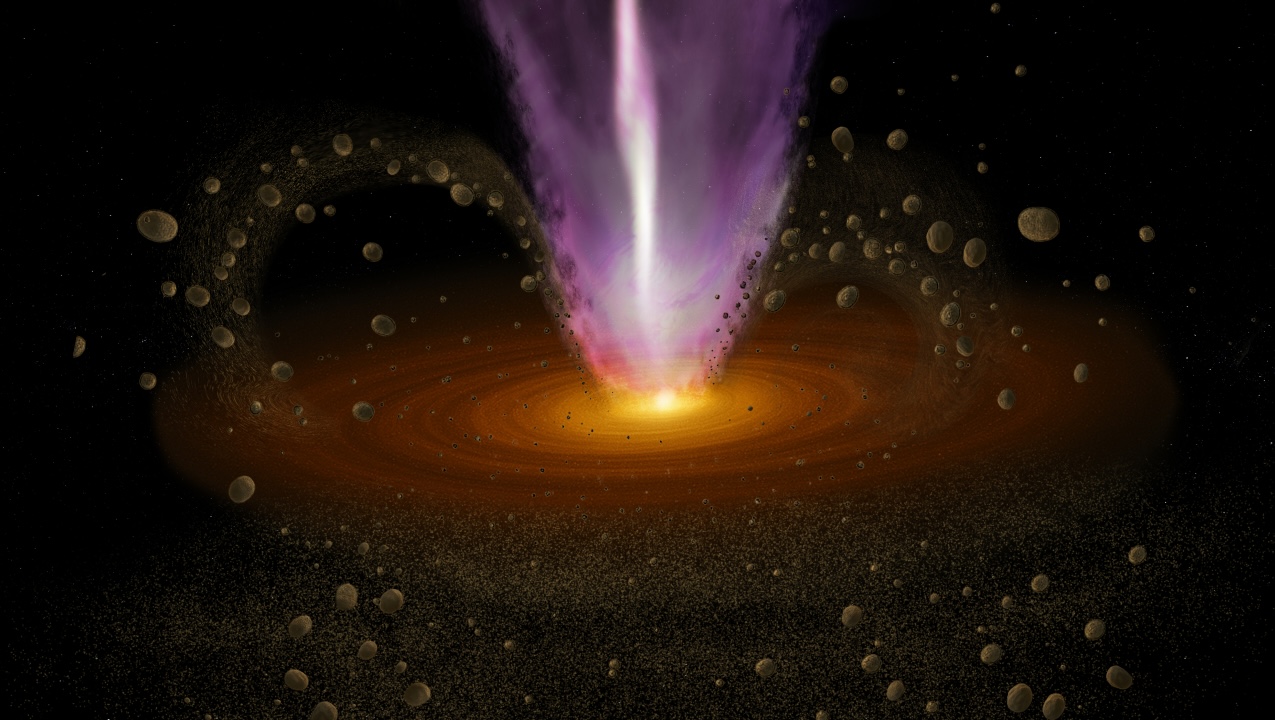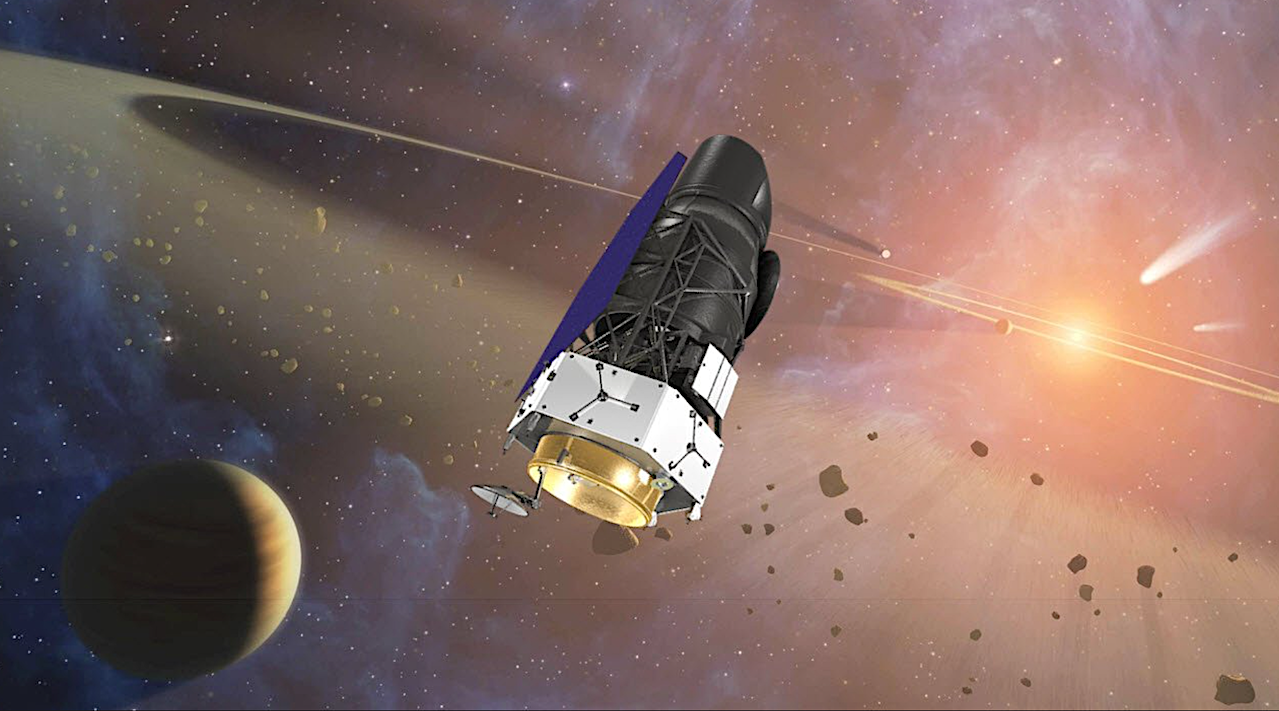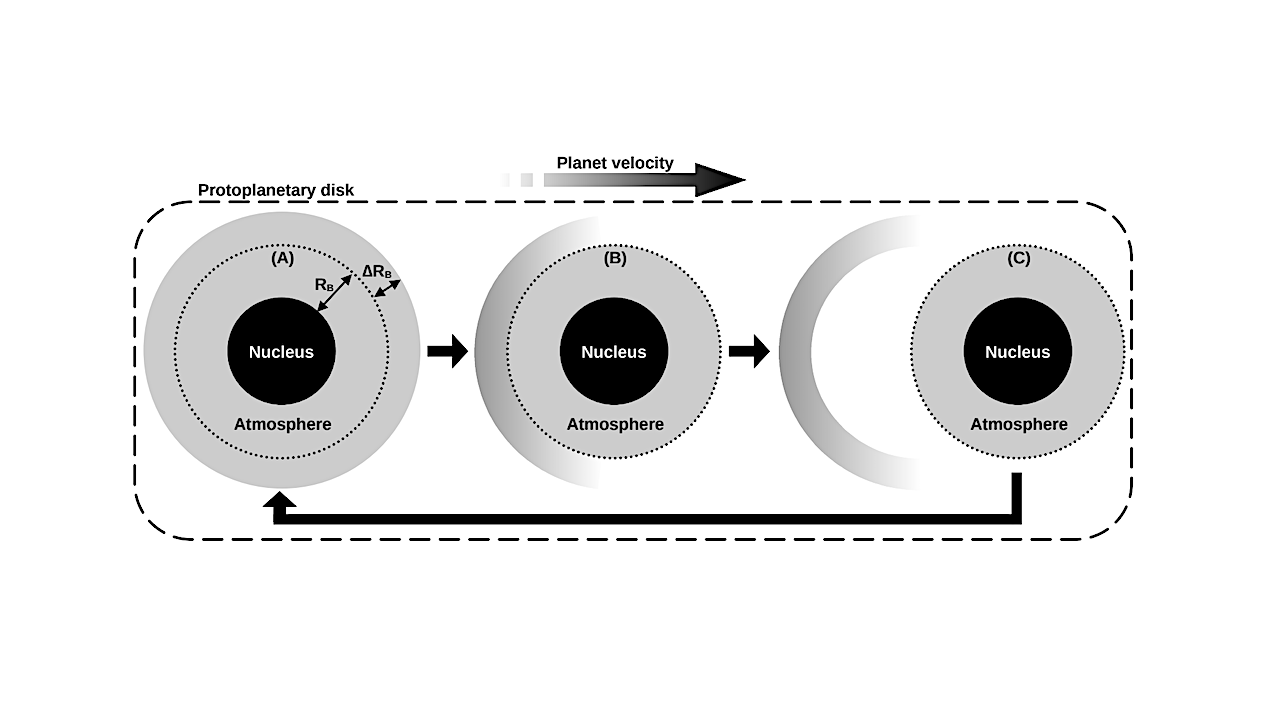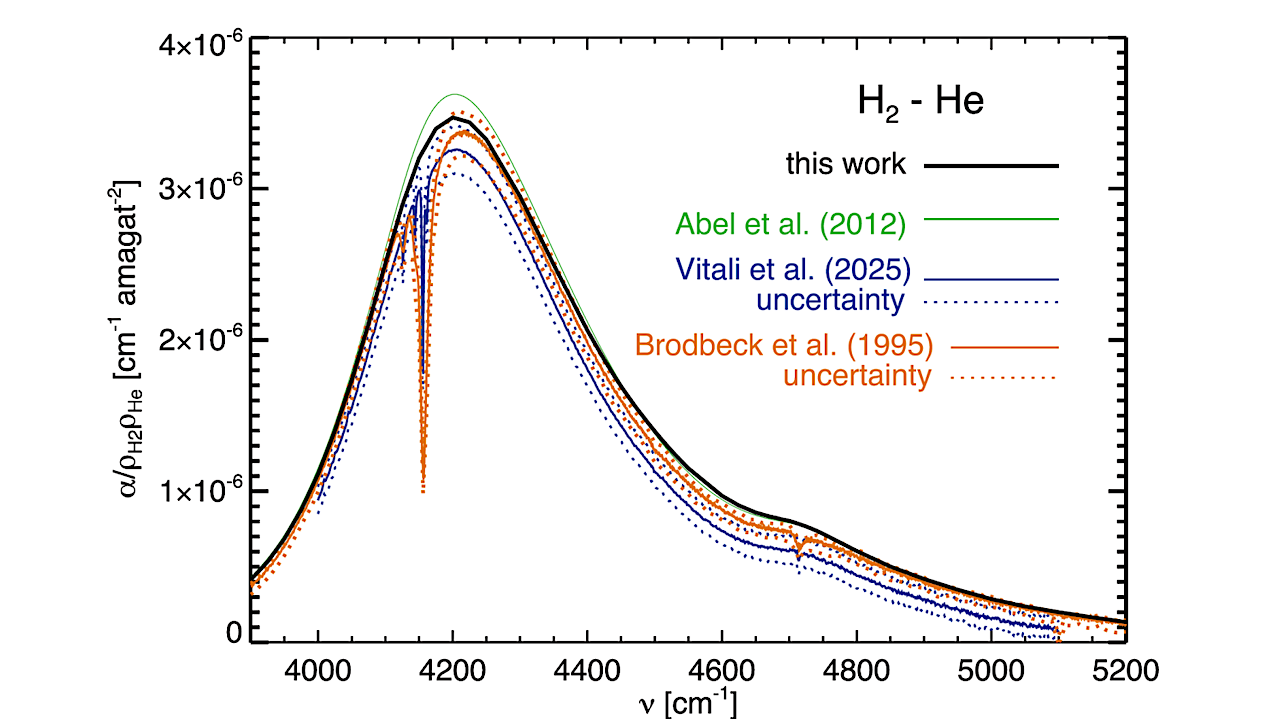The Tempus Pro device, which is flying on participating missions as part of research testing telemedicine capabilities. Credit: Sistema d’Emergencies Mediques (SEM)/ESA Editor’s note: If you search for a definition
Astrobiology91- Page
Averaged Raman spectra (a) acquired from A. thaliana grown on treated and untreated lunar regolith at 47 days old. Changes in the intensities of vibrational bands that can be assigned
Various small shelly fossils recovered from the beds surrounding the Cambrian reefs. Scale bar is 1 mm. Credit Photo courtesy Sarah Jacquet More than 514 million years ago, long before
Artist’s concept of protoplanetary disk, like the thirty studied for the ALMA AGE-PRO survey. The lifetime of the gas within the disk determines the timescale for planetary growth. Credit: NSF/AUI/NSF
Large dust grains observed surrounding outflows of young protostellar binary system L1551 IRS5. Credit: B. Saxton U.S. National Science Foundation/NSF National Radio Astronomy Observatory The Atacama Large Millimeter/submillimeter Array (ALMA)
The ice blanketed bedrock of the Transantarctic Mountains. Credit Timothy Paulsen A new study led by University of Wisconsin-Oshkosh geologist Timothy Paulsen and University of Colorado Boulder thermochronologist Jeff Benowitz
Nancy Grace Roman Space Telescope The Nancy Grace Roman Space Telescope (hereafter, Roman) is NASA’s next astrophysics flagship mission. When fully operational in 2027, Roman will provide the astronomical community
Exoplanet Discovery Database Discovering an exoplanet doesn’t mean having one, definitive eureka moment. Instead, it requires multiple observations, sometimes from multiple observatories, and the scientific community coming together in agreement
Schematic diagram showing the three stages of cooling from Bondi radius delaminations. In (a), the planet forms a Bondi radius boundary layer of thickness ∆RB with a temperature contrast ∆TB
Binary collision-induced H2–He absorption coefficient, α, normalized by the hydrogen and helium gas densities, as function of frequency in the fundamental band, at 296 K. The parato-ortho distribution, is representative
-
 012024 in Review: Highlights from NASA in Silicon Valley
012024 in Review: Highlights from NASA in Silicon Valley -
 02Panasonic Leica Summilux DG 15mm f/1.7 ASPH review
02Panasonic Leica Summilux DG 15mm f/1.7 ASPH review -
 03How New NASA, India Earth Satellite NISAR Will See Earth
03How New NASA, India Earth Satellite NISAR Will See Earth -
 04And Thus Begins A New Year For Life On Earth
04And Thus Begins A New Year For Life On Earth -
 05Astronomy Activation Ambassadors: A New Era
05Astronomy Activation Ambassadors: A New Era -
06SpaceX launch surge helps set new global launch record in 2024
-
 07Space Force plans new ‘Futures Command’ amid pressure to speed up modernization
07Space Force plans new ‘Futures Command’ amid pressure to speed up modernization


